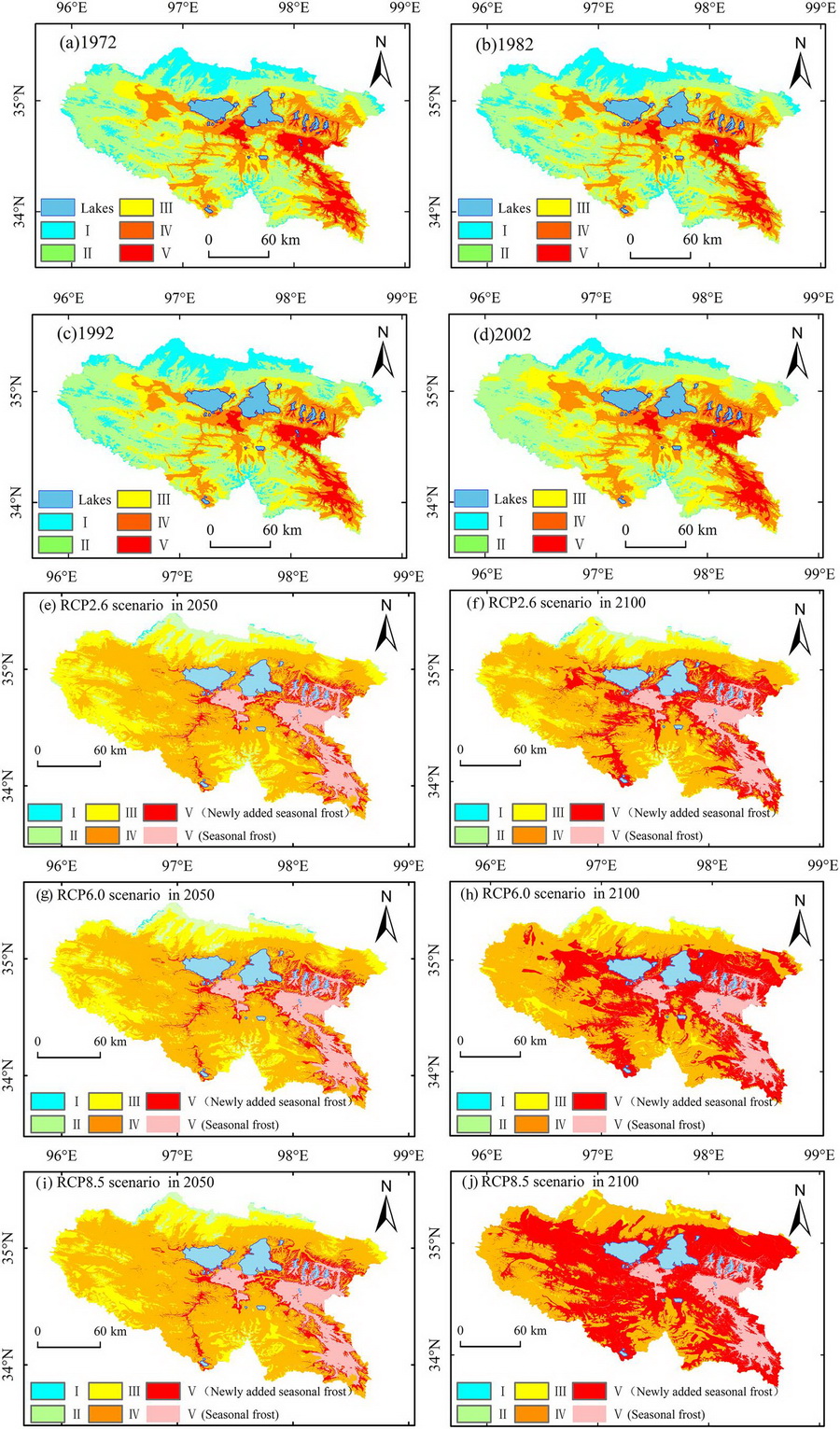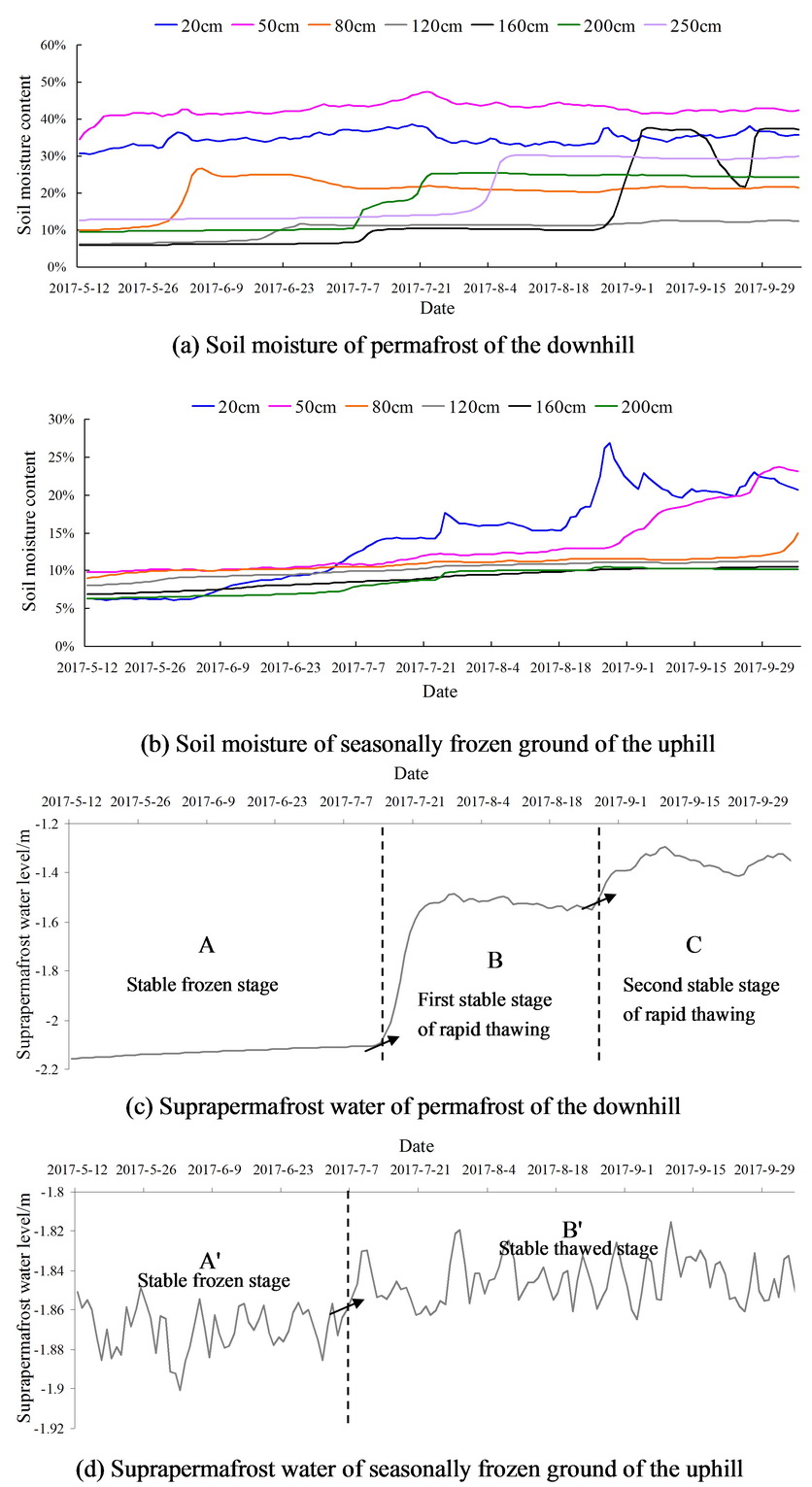Permafrost Degradation Affects Hydrological Factors in Source Area of Yellow River
Updatetime:2021-05-21From:
【Enlarge】【Reduce】
In recent years, climate warming has significantly accelerated the global permafrost degradation. Affected by the permafrost degradation, the processes of water supply, runoff and discharge have changed significantly in the Source Area of the Yellow River (SAYR) in the northeast of Qinghai-Tibet Plateau.
The water yield in the SAYR is very important for the stability of water resources and the integrity of regional ecosystem. However, due to the complexity of regional permafrost, it leads to that permafrost interacts with surface water and groundwater.
In particular, topography, active faults and permafrost degradation control the distribution of groundwater. Thus, it limits people's understanding of permafrost degradation caused by climate change and its hydrological impact.
Recently, a research team led by Prof. SHENG Yu from Northwest Institute of Eco-Environment and Resources (NIEER) of Chinese Academy of Sciences (CAS) studied on the process of permafrost degradation and its response of key hydrological factors in the SAYR driven by climate change.
In this study, scientists simulated the change process of four types of permafrost by combining with the heat conduction calculation model. Based on GIS spatial analysis, the temporal and spatial changes of permafrost in the SAYR in the past 50 years and the next 100 years were also presented (Fig.1).
In addition, they also compared the differences of hydrological factors under different degraded states of frozen soil based on the field monitoring and indoor simulation (Fig.2).
The study showed that the soil water content in the permafrost area gradually increases to reach a saturated state with the thawing of soil. Influenced by the barrier of the permafrost layer, the interflow accumulates near the permafrost table. It leads that the suprapermafrost water level in the permafrost area rises significantly.
Besides, the hydrological process of permafrost is also affected by local factors such as rainfall evaporation, soil texture, terrain, vegetation cover and hydrogeological conditions.
The study results will provide scientific basis for further understanding the formation process and evolution law of runoff in the Yellow River Basin. It will also provide theoretical support for accurately predicting the ecological and hydrological effects of permafrost changes in SAYR.
The relevant periodical research results have been published in the journals of Hydrological Sciences Journal entitled on Differential response to rainfall of soil moisture infiltration in permafrost and seasonally frozen ground in Kangqiong small basin on the Qinghai-Tibet Plateau.

Fig. 1 Temporal and spatial changes of permafrost in the SAYR in the past 50 years and the next 100 years (Image by SHENG Yu)

Fig.2 Differences of hydrological factors under different degraded states of frozen soil (Image by SHENG Yu)
Contact:
SHENG Yu
E-mail: sheng@lzb.ac.cn
State Key Laboratory of Frozen Soil Engineering, Northwest Institute of Eco-Environment and Resources, Chinese Academy of Sciences, Lanzhou 730000, China.
Appendix




